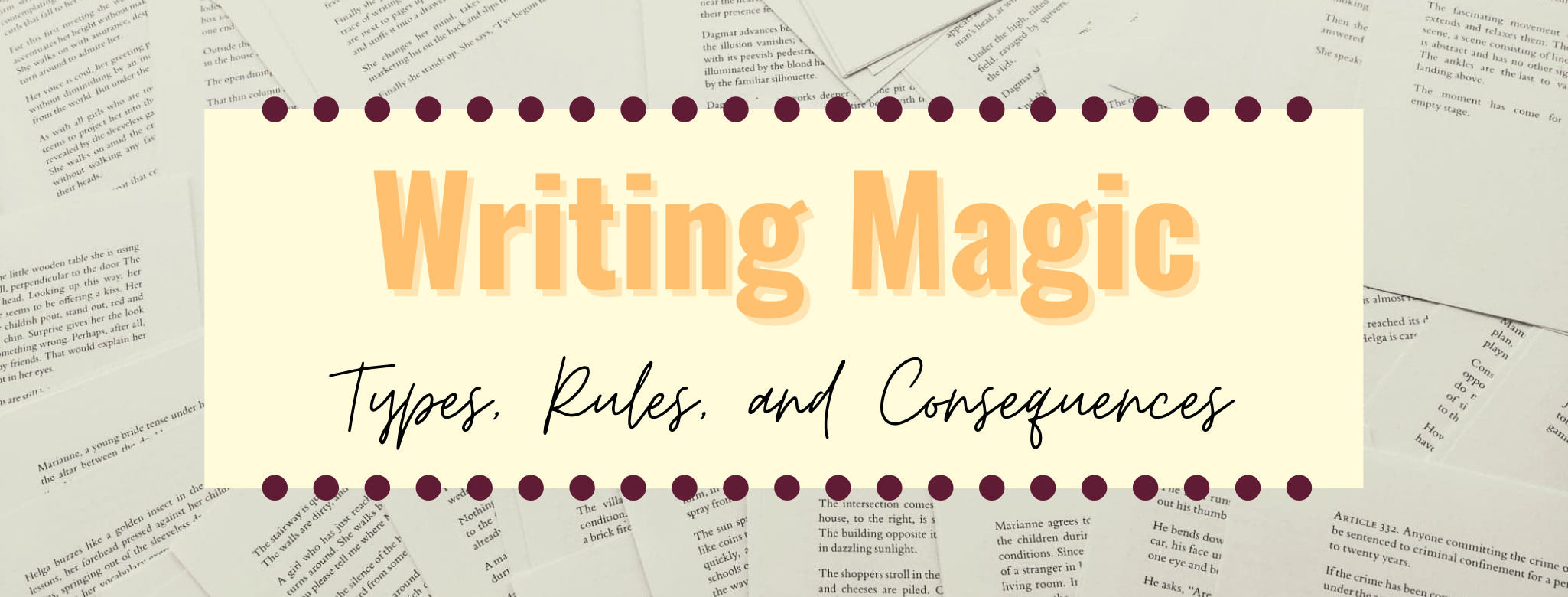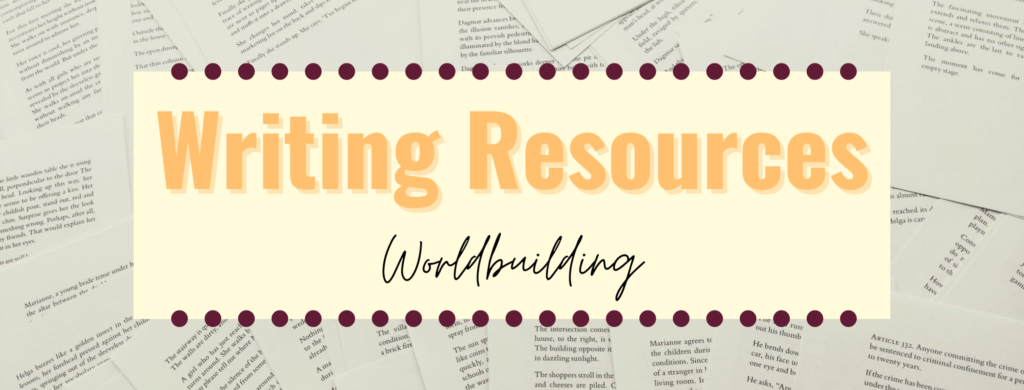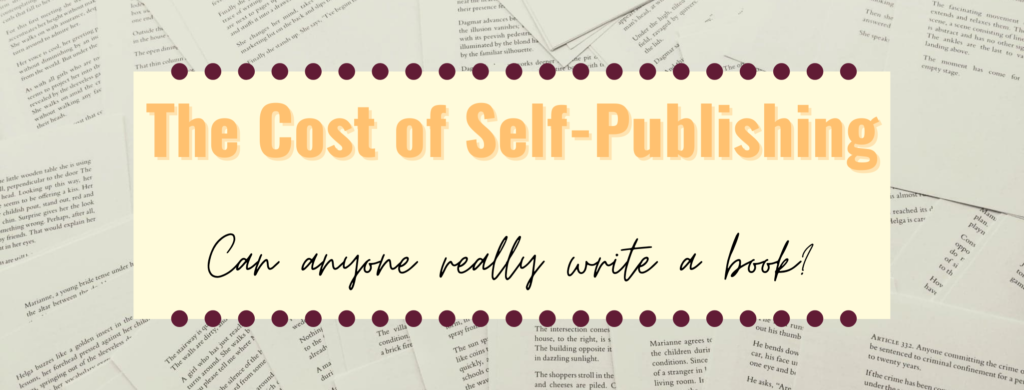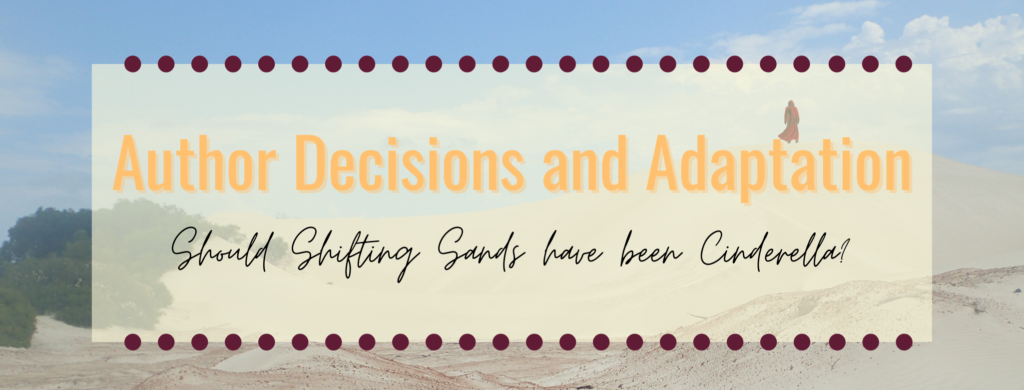This week, I played around with writing outside of my usual fantasy genre. I wrote the first chapter of a romantic comedy for a competition and, not gonna lie, really enjoyed myself. But, as I thought further about this, I realised that fantasy is always going to be the genre I go back to. I love playing elsewhere, but fantasy is my sandpit. I love creating worlds and adding in magic. So, spiralling out from a discussion with a friend, I figure it’s time to combine passion with research and talk about writing magic!
I’ve spoken a little before about how important magic was in the development of Shifting Sands – one month to go until the next shuffle by the way! – and a little about the fact fantasy threaded its way into my masters dissertation, but so far I’ve been quite restrained on the magic talk. From both a personal and a research perspective, however, magic is a pretty important element in Shifting Sands, so worth expanding on.
Magic in Fantasy
The lines that define what the fantasy genre is are fuzzy at best, but I tend to think of magic as a good indicator. Geuthert, who I’ll mention a lot in this blog post, agrees, arguing that magic is a core element of fantasy (2016). We escape into a world that is somewhat different than our own – even when we’re talking low fantasy – where the possibilities are different. If you think of the Narnia books, as an example, there’s this idea that ordinary spaces could become otherworldly. A wardrobe is a portal to another world. In Harry Potter, wizards live among us and they wield magic wands. Even if you consider vampire novels as fantasy, there is that element of otherworldliness – magic – pulling the reader into the story.
In writing magic for fantasy, there are many options in front of you. The fuzzy lines bring freedom! You see, magic can play a few roles in fantasy. First, worldbuilding. If you think of the Harry Potter, for example, much of the magic lies in the setting. There are wizards and dragons, all establishing a world that is very different than our own. But, if you look closely, you could remove the magic entirely and the story wouldn’t be too different. And then there is plot, where the magic directly shapes events. Children of Blood and Bone provides a good example of this. The story wouldn’t happen without magic. As a writer, this is perhaps the first decision you have to make.
Writing Magic – high or low saturation
How important is magic to your fantasy world? Could your story function without the magic? It’s fine to say it’s unimportant – look at the success of Twilight and Fifty Shades of Grey for the proof of that – but you need to know. Guethert divides fantasy into ‘magical saturation’. In a story with high magic saturation, the magic plays an essential role. It doesn’t need to be strictly defined, in terms of how the magic works, but its importance must be clear. Magic, in many ways, drives the plot forward if the saturation is high. Examples of this include Children of Blood and Bone, Fullmetal Alchemist, and Graceling.
In low magic saturation, magic is often more about establishing the world. It doesn’t need to drive the plot. Geuthert suggests that it can be used to move through a plot point – take Gandalf confronting Wormtongue in Lord of the Rings as an example – but this is a momentary use rather than an essential event. Low magic saturation uses magic as a form of immersion but it’s not an essential element when it comes to plot. Examples of this include Harry Potter, Lord of the Rings, and The Lion, the Witch, and the Wardrobe.
Writing Hard or Soft Magic
Another key question when writing magic is how the magic works. Brandon Sanderson wrote about this in a series of blog posts but, I won’t lie, the first time I encountered the discussion around hard and soft magic was through Hello, Future Me. Basically, does your magic system have rules? In a soft magic system, it’s totally okay to use magic as a kind of “by the gods” intervention. Its main role in the story is to establish a sense of wonder and fascination. You can see why a soft magic system and low magic saturation often twin together. The magic, in a soft magic system, is all about setting, and often the main character is encountering it for the first time. Think, for example, of Lord of the Rings or the Narnia books. The magic is there, but it’s relatively undefined.
In a hard magic system, the opposite is true. There are firm rules about how this magic works and what its limitations are. Those who wield magic in a hard magic system need to know the consequences of pushing it too far and often this is a key plot point. If we think of Children of Blood and Bone, we know that those who can use the magic are marked by their appearance and the maji risk death if they over-exert themselves. In Fullmetal Alchemist, it takes training to become a good alchemist, with both the rule of equivalent exchange and taboos in place to control what can be done. In both examples, the characters see the consequences of breaking the rules or pushing beyond their limits. Your reader should be able to understand how this magic could be used in the course of the plot.
Writing Passive or Active Magic
The final decision to make when constructing your magic system is its level of activity. This mostly comes down to whether or not the magic in your world can be wielded or manipulated. In a passive magic system, the magic is largely environmental. The hero cannot use it. Narnia, again, is a classic example of this. We have unicorns and other magical beasts but the Pevensie children can’t cast spells or otherwise use the magic. They may be able to use a magical tool, like Lucy’s healing cordial, but this isn’t controlled or shaped by them. Twilight, I would argue, is similarly passive. Magical creatures – in this case, vampires and werewolves – exist in the world. These creatures may have powers, like telepathy or foresight, but it isn’t a skill they actively develop. It’s just there. Bella, our protagonist, observes this magic but isn’t part of it until the last book.
Active magic, meanwhile, often requires training. Guethert suggests that this kind of magic has a distinct source that can be tapped or manipulated. It is wielded by the characters – a tool for their use. So, if we think of Harry Potter, wizards are able to access the internal magic through training and wand use. It can be weaponised or otherwise used to aid whatever needs they have. Avatar – both Last Airbender and Legend of Korra – is the same. Bending powers are active skills. We can see this clearly through the comparison with Sokka, a non-bender, who uses a boomerang where benders would use their powers.
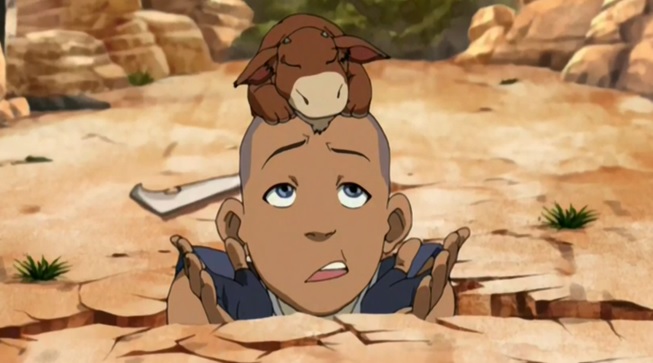
Magic in Shifting Sands
I don’t know about anyone else, but I always learn best with examples. And what better example is there than myself? When writing Shifting Sands, I tried to keep these three elements in mind. The easiest part, in many ways, was understanding the importance of magic in my story. The dream that started it all was, quite literally, an argument between three characters about the magic. It had to be high stakes if they were willing to fight each other over it. Working backwards, I knew that the magic involved water and so added an extra layer of importance by setting Shifting Sands in a desert. Nothing quite like torturing your characters early, you know?
As you can probably gather, I went for a hard magic system. I needed magic to have a cost and consequences because otherwise, where were the stakes? Why put it in a desert if there’s no cost? I don’t think the characters have fully realised the costs of using up all the Blessed water they have with them yet, at least not in Book One, but consider this a hint as a reader. The Temple, for all its flaws, set limits on magic use for a reason.
And finally, I went for an active magic system, Going back to that first dream, the end result of it showed me that it had to be an active system. The characters needed to be able to wield it but, as with the examples given before, there needs to be a misunderstanding or pushing of those limitations. If you’ve read this first wave of Shifting Sands, you’ll have seen hints of this. More will come once you meet Aya properly.
So, how will you write magic?
There are obviously many more things to tease out when creating a magic system – figuring out what to include, what not to include, etc – but these three decisions are key to shaping your fantasy story. First, how important is the magic to your story? Second, are there rules and consequences to magic use? And finally, can your magic be wielded by the hero? I’d love to hear about your favourite magic systems in the comments!
